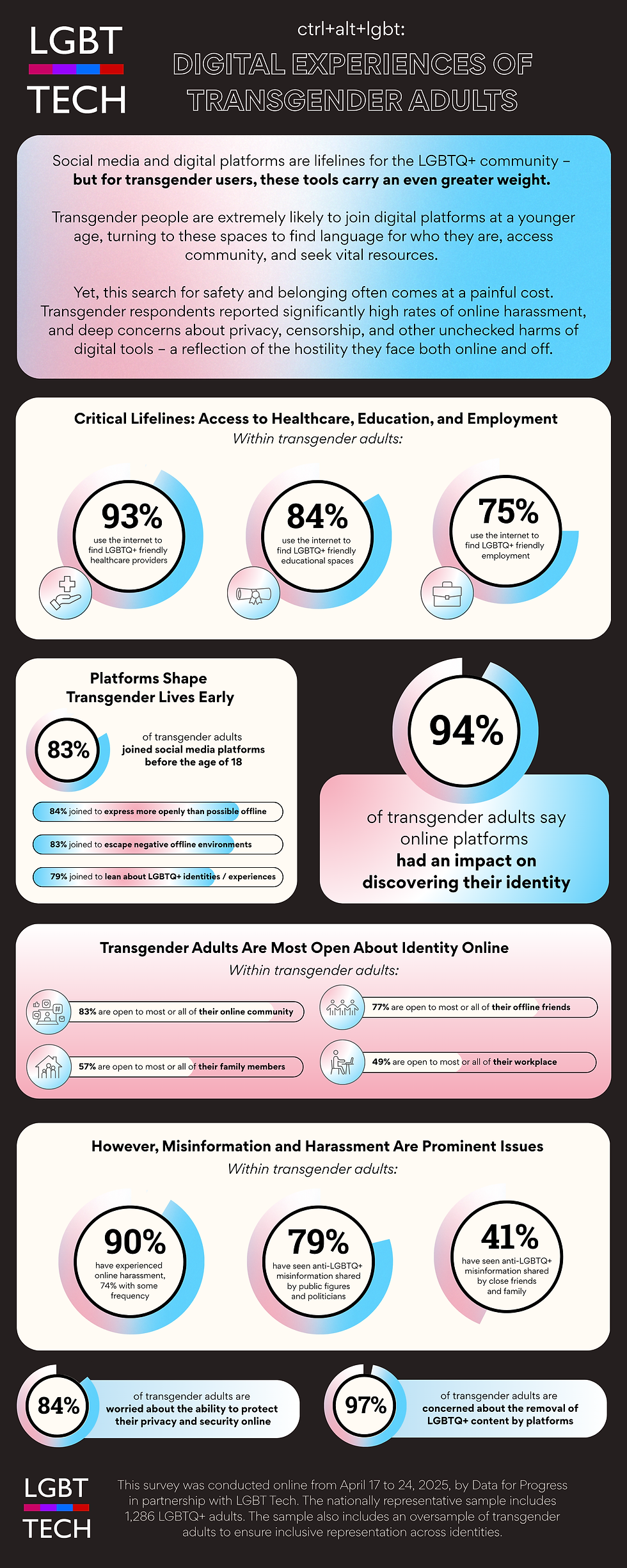In a Year of Attacks, Digital Spaces Remain Essential for Transgender Lives
- CJ Larkin
- Aug 7
- 3 min read
Over the past year, transgender Americans have been at the center of a growing wave of legislative attacks and intensifying public hostility. Since the start of 2025, more than 900 anti-trans bills have been introduced across 49 states. At the federal level, the Trump administration has issued an onslaught of executive orders designed to erase transgender people from public life, including efforts to block accurate gender markers on passports and deny visas to transgender athletes. The Federal Trade Commission has joined this broader attack by misusing its regulatory authority to target gender-affirming care for minors, stretching its mandate beyond its intended scope to participate in a politically motivated assault on an already marginalized community.
As transgender people are increasingly pushed out of public spaces and denied basic rights, digital spaces remain one of the few places where many can find community, information, and safety. Against this landscape, polling data from our recent ctrl+alt+lgbt report affirms just how critical digital refuge is, and how fragile that sense of refuge has become. Conducted in partnership with Data for Progress, our polling captured responses from 1,300 LGBTQ+ adults in the United States, oversampling for transgender respondents in order to understand how non-conforming identities, technology, and equity converge in the digital landscape.

Platforms Shape Transgender Lives Early
Transgender people often access social media early in life, relying on these platforms as vital tools for understanding themselves and finding affirmation in a world that denies them it. According to our polling data, 83% of transgender people joined social media before the age of 18, compared to 64% of the LGBTQ+ community broadly. An incredible 94% of transgender respondents said online platforms had an impact on discovering their identity, notably higher than the 76% reported across LGBTQ+ adults broadly. Transgender people joined platforms for a range of reasons – 84% joined to express themselves more openly than they could offline, 83% joined to escape negative offline environments, and 79% joined to learn more about LGBTQ+ identities and experiences.
As lawmakers in the U.S. and abroad push to restrict youth access to social media, these findings make clear that online platforms are not just helpful, but essential for the safety, identity development, and well-being of transgender youth.
For Transgender People, Misinformation and Harassment Online is Pervasive
Despite the important role digital spaces play in their lives, transgender people still find themselves disproportionately targeted online. Ninety percent of transgender adults have experienced online harassment, compared to just 68% of the broader LGBTQ+ community. Seventy-nine percent of transgender respondents reported seeing anti-LGBTQ+ misinformation shared by politicians and public figures online, and 41% have seen this sort of content shared by friends and family members.
In spite of this, transgender people still feel safer online than they do offline: 82% of transgender adults report feeling safe online, compared to only 62% feeling safe offline. This isn’t a testament to the safety of digital spaces – rather, it’s a stark reflection of how unsafe the offline world has become. These experiences highlight the urgent need for stronger protections to keep digital spaces a safe way to connect with community, engage in identity exploration, and find support, especially as those opportunities are being stripped away in the physical world. Transgender respondents further emphasized their concerns about online safety, with 84% reporting they are worried about their ability to protect themselves online, and 97% reporting that they are concerned about the removal of LGBTQ+ content from digital platforms.
Online Spaces Allow for Visibility, Especially in an Offline World that Does Not
In a world that increasingly discourages openness and visibility amongst the transgender community, it is even more important to cultivate digital spaces where safe self-expression is possible. Eighty-three percent of transgender respondents reported being open about their identity to most or all of their online community – comparatively, only 57% report being open about their identity to their family, and only 49% in the workplace. For many, digital spaces offer a rare chance to be seen in ways that often feel too unsafe to be offline. And as efforts to undermine these spaces grow stronger, it is crucial that our efforts to protect them do too.
You can further explore these and other findings in our full 2025 report: ctrl+alt+lgbt: Digital Access, Usage, and Experiences of the LGBTQ+ Community.
